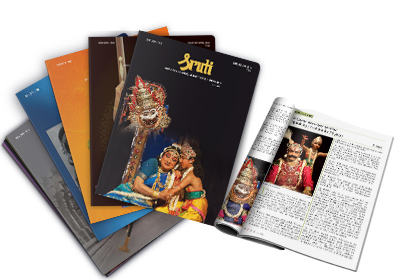
The name of Guru Bipin Singh, is synonymous with Manipuri dance. He's gone now but this twinning of names will remain a part of history. His deep interest in playing the mridanga prompted his father, despite misgivings, to arrange for proper musical training. Yet there was tension between father and son and, later the lad left his home. This was the beginning of his odyssey, an often difficult but always exciting journey, in the field of music and dance. A realisation of the purpose of his mission later on prompted him to declare: "I must, with full trust in God and His Grace, keep delving deeper and deeper into [Manipuri dance's] intrinsic beauty and develop [the dance] into a powerful, enchanting, and intelligible theatre art and present it to people all over India and abroad." He was true to his word till he breathed his last.
A person of firm principles and lofty ideals, he pursued his goal, his search for beauty, dedicatedly, diligently, scientifically and with passion. If he took the dance out of Manipur, he never did take Manipur out of the dance. He transformed what was and still is in that State a vehicle for religious expression and devotion to god, into an art-form that was eventually accepted as classical. He did not renounce the Manipuri idiom; he enriched it and made it into a connoisseur's delight, not only in India but abroad as well. Crossing many a hurdle, beauty of art and not just the ecstasy of devotion. In a land known for the dichotomy between scholar and artist, he brought the twain together by pursuing scholarship and art in tandem. The result: the music and dance of Manipur he presented to the world through his own enchanting prism of beauty early gained the stamp of authority, as well as authenticity. He was propelled by a desire to help seekers of knowledge and, such was his greatness, he offered his help even to those who hurled brickbats at him.
He was, as his senior most disciple Nayana Jhaveri observed, a perfectionist. He has left behind a legacy beyond measure, consisting not only of the dances and musical compositions of his creation, but also a wealth of knowledge and authoritative books he wrote and a vast collection of manuscripts, books and other texts he gathered—a legacy deeply appreciated and highly respected by performers and connoisseurs of Manipuri dance, as well as scholars of the idiom.
His legacy includes, as well and most importantly, the disciples he trained and the disciples of his disciples. Whether he so intended it or not, he founded and shaped a gharana, the Bipin Singh gharana, of Manipuri dance. In 1972, he founded the Manipuri Nartanalaya in Kolkata with branches in Mumbai and Inphal and was responsible for training a new generation of Manipuri dancers. He was awarded the title of Hanjaba by the Maharaja of Manipur and the Sangit Natak Academy Award in 1966.
He received many more awards and titles, but these can never be a true measure of the man. He was a genius. He was a savant. Above all he was an artist in the true sense of the word. He left the world of Manipuri dance richer, more entrancing than he found it. He was an epoch-maker.


